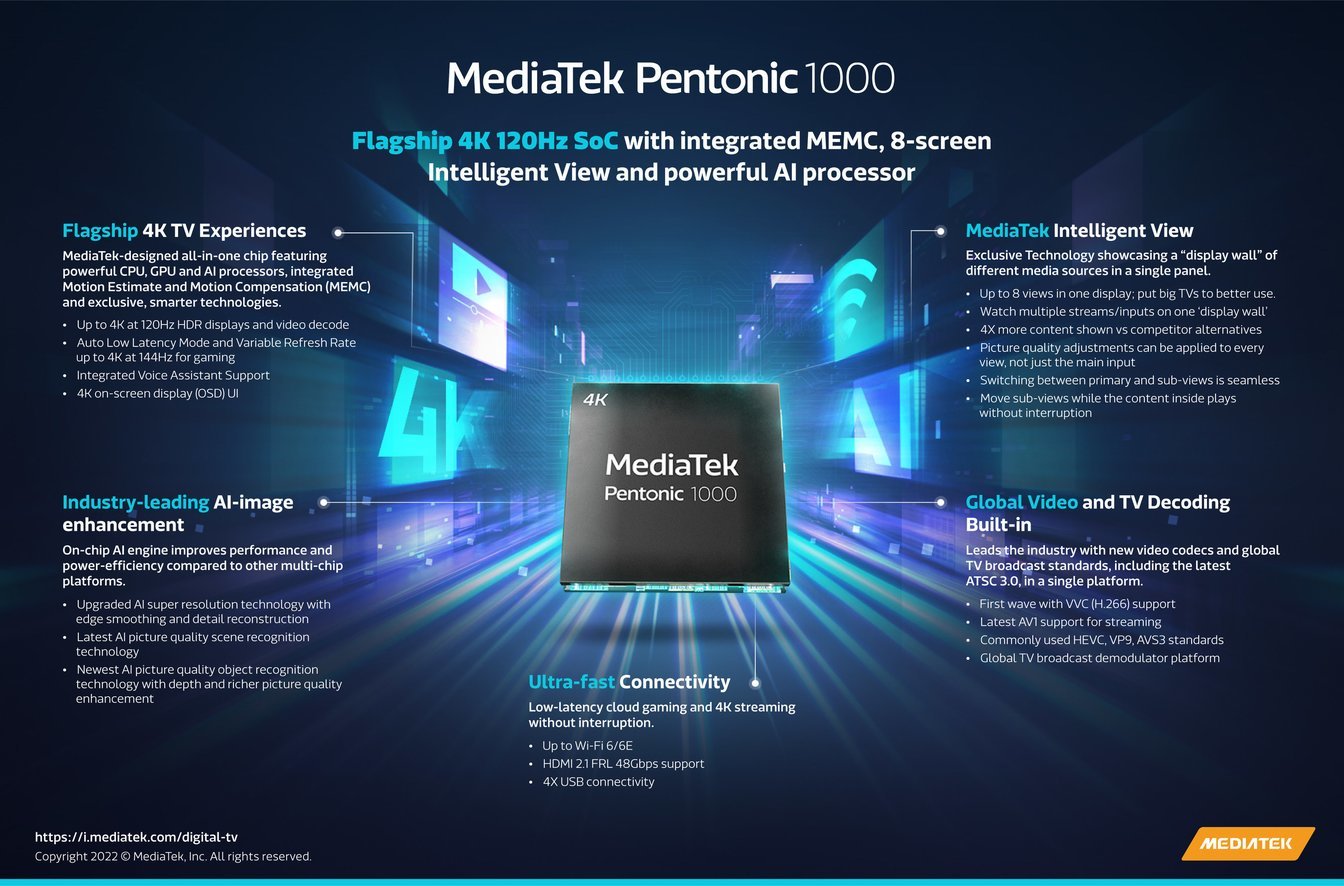One of the TV industry’s biggest chipmakers, MediaTek, has announced the launch of a new system-on-a-chip that’s expected to power a number of high-end televisions from brands including Panasonic, Philips, Samsung Electronics and Sony next year.

Those brands traditionally use MediaTek’s silicon to power their TVs and so the Pentonic 1000 system is a likely choice for next year’s models. All the more so because it’s pretty special, being the first chip from MediaTek to support up to four, full-featured HDMI 2.1 ports. The company’s current top-of-the-line chip, which powers the flagship models of all four brands mentioned above, can only support two HDMI 2.1 ports, with two being the older HDMI 2.0 flavour.
While some might imagine that two HDMI 2.1 ports is plenty, that’s not the case for many users. The problem is that one of those two ports is also the eARC port used to connect a soundbar or AV receiver, meaning there’s only one remaining for a PC, Xbox Series X or PS5 consoles.
According to MediaTek, the four HDMI 2.1 ports will support 4K at either 120Hz or 144Hz, depending on the panel’s capabilities. So that essentially future-proofs next year’s TVs, leaving room for a soundbar, console or computer, and whatever other HDMI 2.1 devices might arrive later on down the line. The HDMI 2.1 ports will also support Variable Refresh Rate and Auto Low-Latency Mode, and though it hasn’t yet been confirmed, many in the industry are saying the chips will also allow gaming in Dolby Vision at 4K 120Hz. For now, that is an exclusive feature enjoyed only by LG’s top OLED TVs.
Elsewhere, the Pentonic 1000 adds support for Dolby Vision IQ with Precision Detail, meaning next year’s TVs should have greater contrast control and improved dark detail that can be optimised according to the ambient lighting. Meanwhile, the Motion Estimation, Motion Compensation (MEMC) capability is able to insert extra frames within scenes to display smoother-looking movements in fast-paced content.
The other improvements are less Earth-shattering but still welcome. The Pentonic 1000 supports Wi-Fi 6E that enables lower-latency wireless internet connectivity. There’s also the promise of “AI enhancements”, but it wasn’t made clear if this relates to the picture, sound or software experience.
As for the actual processor, it’s said to incorporate a multi-core CPU for keeping the UI up and running, and a dual-core GPU for graphics processing. We’ll likely hear more about the MediaTek Pentonic 1000 when next year’s TVs are unveiled at CES 2023 in January.